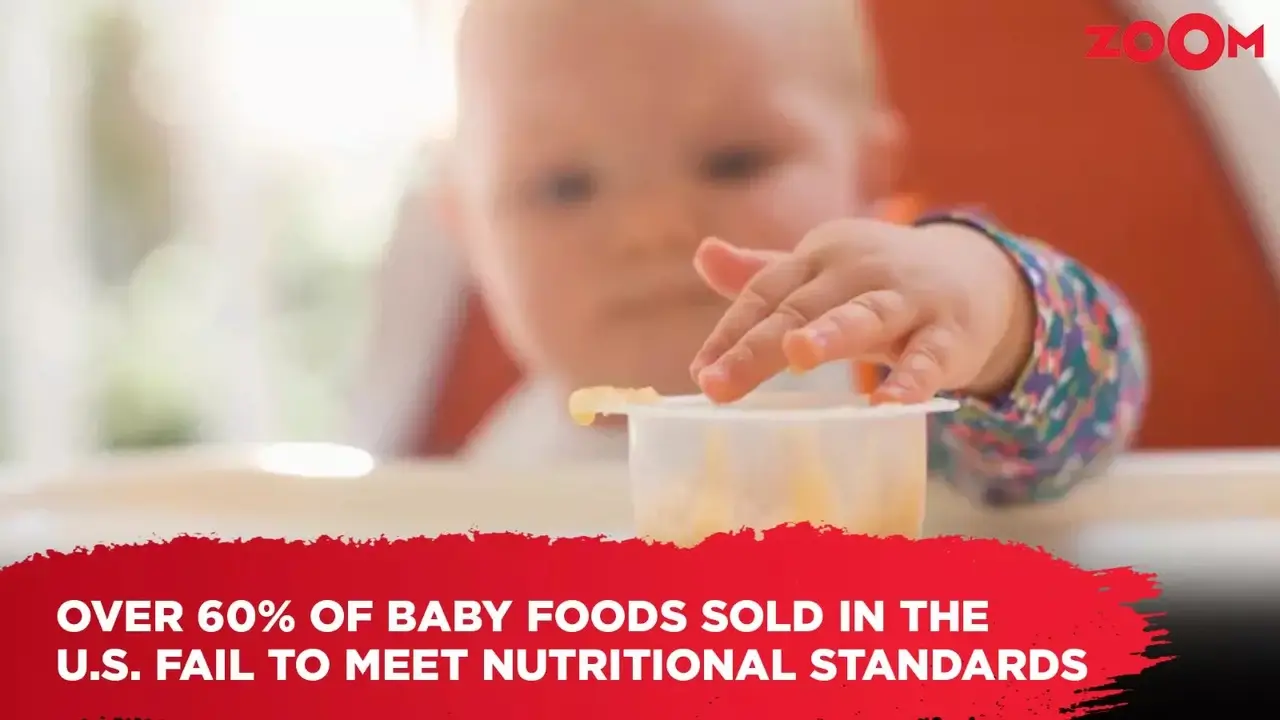Around 60% of baby and toddler food items sold in major U.S. retailers fail to meet international nutritional guidelines, and nearly all of the products utilize “misleading” marketing tactics, a new report suggests, two factors researchers say may be contributing to the country’s high childhood obesity rates.
Key Facts
Though the specific names of the products weren’t revealed, 651 baby and toddler food products sold at the top 10 U.S. grocery stores were examined to see whether they meet nutritional and promotional guidelines set by the World Health Organization, according to a study published Wednesday in Nutrients.
WHO guidelines were used because there aren’t any U.S.-specific recommendations for baby food, except those created by the Food and Drug Administration for infant formula, milk and oral electrolytes, which weren’t included in the study.
Overall, 60% of the products failed to meet nutritional guidelines, 70% didn’t meet protein recommendations, 44% exceeded total sugar recommendations and 20% went over sodium guidelines.
The study also found over 99% were promoted with “misleading” marketing practices by using terms and claims WHO prohibits from appearing on baby and toddler food products—the researchers warned these terms could create a “health halo” that overestimates the products’ healthfulness.
Each product had an average of 4.7 prohibited claims, with some having as many as 11 claims; the most commonly misused claims were “non-genetically modified” (70%), “organic” (59%), “no-BPA” (37%) and “no artificial colors/flavors” (25%).
Many products also had “misleading” names: “Snack and finger foods often referred to fruit or vegetables in the product name, despite primarily being made of flour or other starches,” Dr. Daisy Coyle, research fellow and dietician at the George Institute, said in a statement.
The researchers believe their findings should “serve as a wake-up call for policymakers,” because they said the high sugar and sodium content in baby food, and the use of WHO-prohibited marketing terms could be contributing to the high rates of childhood obesity in the U.S., which affects almost 15 million kids.
What Grocery Stores Were Included In The Study?
CLICK HERE TO READ MORE FROM THE REPUBLICAN VOICE
Researchers visited eight stores located in Raleigh, North Carolina between March and May 2023: Walmart, Target, Kroger, Costco, Ahold Delhaize, Publix, Sam’s Club and Aldi.
The remaining two stores—H-E-B and Safeway—weren’t located in the city, so their online websites were used to collect data.
Each product was labeled into one of eight categories: dry cereals and starches, dairy foods, fruit and vegetable purées/smoothies and fruit desserts, snacks and finger foods, ingredients, confectionary, drinks and savory meals/meal components, which was defined as combinations of starches, vegetables, dairy and/or traditional proteins.
Because only food available in the “baby” aisle was tested, yogurt, meat, drinks and other products kept in fridges or in other aisles weren’t included.
What Are Who’s Guidelines For Baby Foods?
The WHO Nutrient and Promotion Profile Model provides both nutritional and promotional standards for foods marketed toward babies and toddlers.
Nutritional recommendations include not marketing flavored or sweetened drinks to babies, limits on how many calories certain snacks and meals should be, a sugar limit for meals and snacks totaling 15% of total calories and no addition of free sugars and sweeteners like fruit syrups and concentrated fruit juice to products.
Some of the promotional guidelines include minimum and maximum age recommendations for certain foods like purées, and the absence of health and marketing claims that could mislead consumers.
Some of these claims include phrases like “full of goodness,” “100% natural,” “fresh,” “real fruit/vegetables” and “contains only naturally occurring…”
Surprising Fact
The George Institute researchers found baby food pouches were the fastest-growing products in the baby food sector, with sales jumping 900% between 2010 and 2023.
However, the pouches were also the unhealthiest products tested, according to the study.
Key Background
Childhood obesity affects one in five children, and this statistic has more than tripled since the 1970s. The U.S. has the 22nd-highest global childhood obesity rates for girls, and 26th-highest for boys.
CLICK HERE TO READ MORE FROM THE REPUBLICAN VOICE
Several factors play a role in increasing the risk of developing childhood obesity, like genetics, physical inactivity, certain diseases and a poor diet.
Children with diets high in ultraprocessed foods are more likely to have risk factors like a higher body mass index, systolic blood pressure and waist-to-height ratio, according to a JAMA study.
Childhood obesity could lead to complications like Type 2 diabetes, risk factors for heart disease like high blood pressure and high cholesterol, breathing problems, joint pain and gallstone disease.
source: forbes.com/most-baby-foods-sold-in-us-dont-meet-international-nutritional-standards























